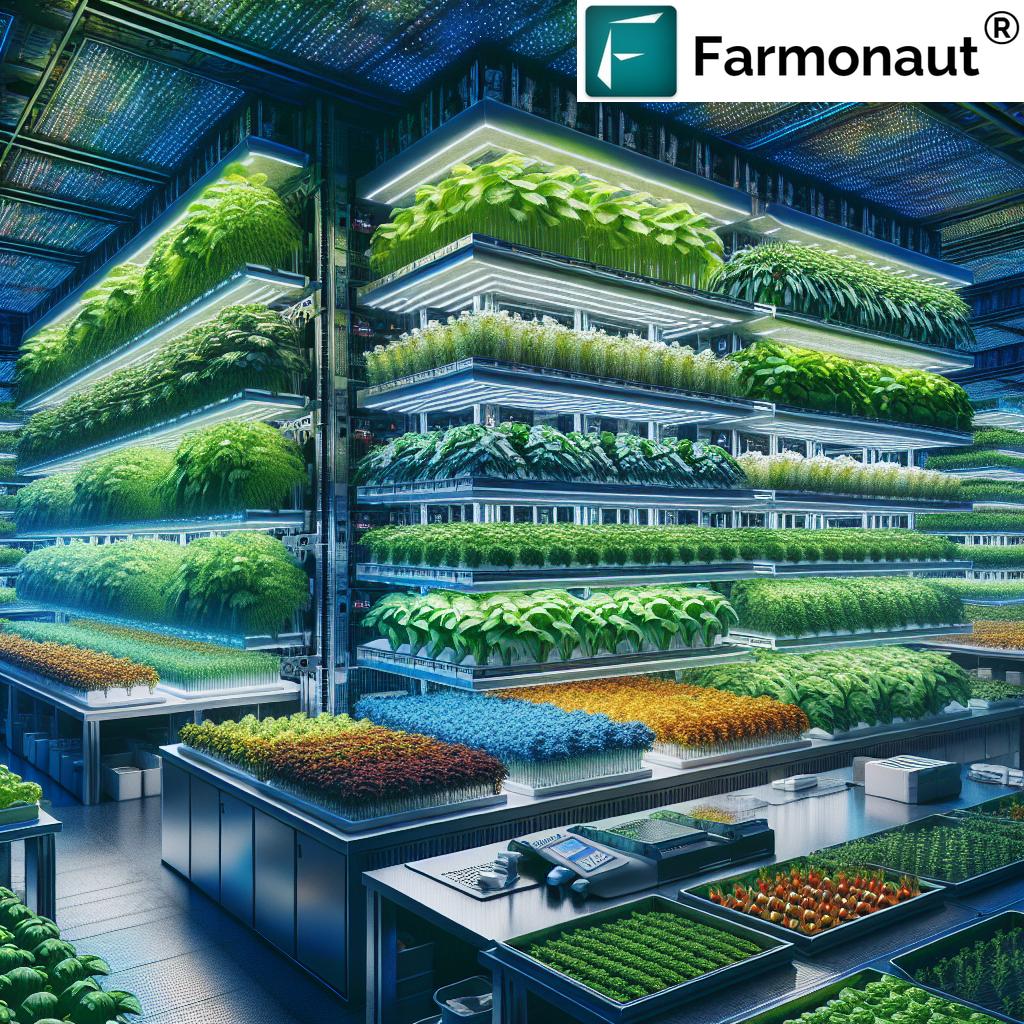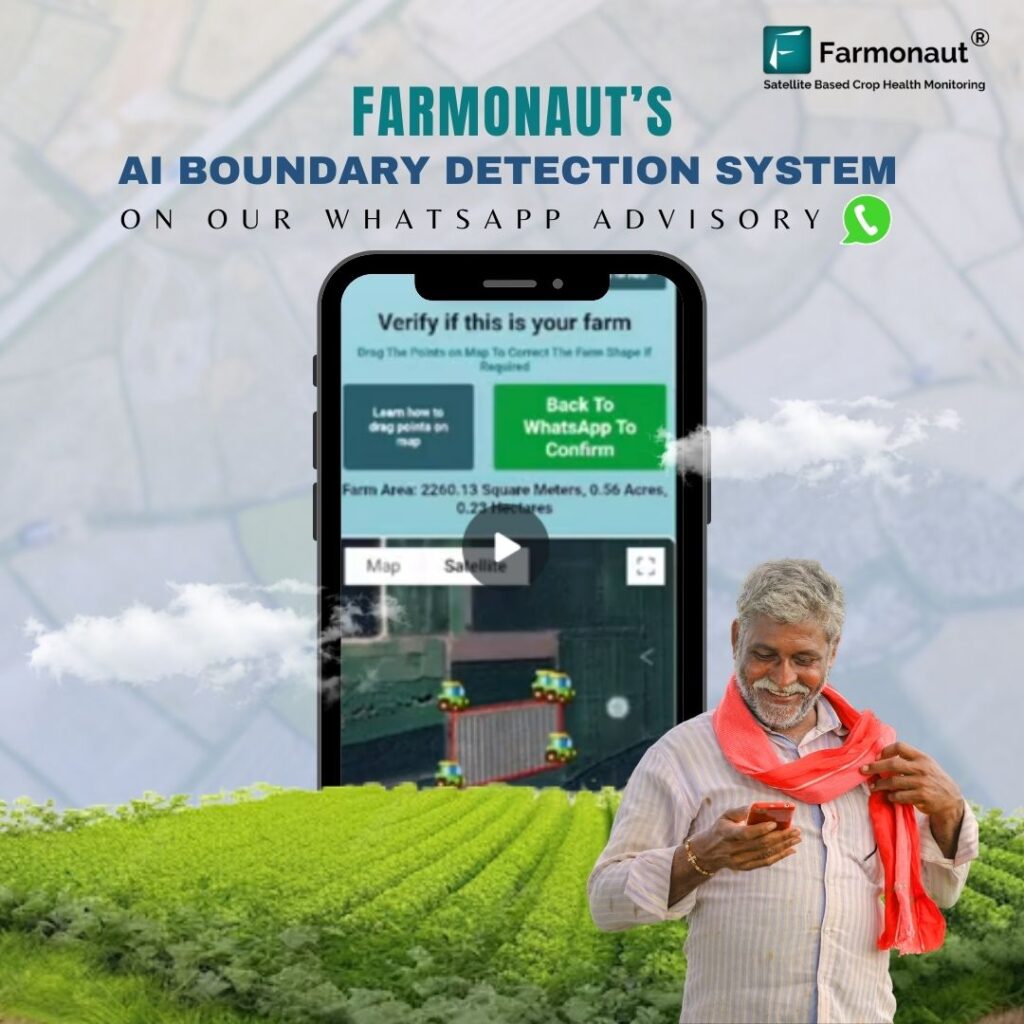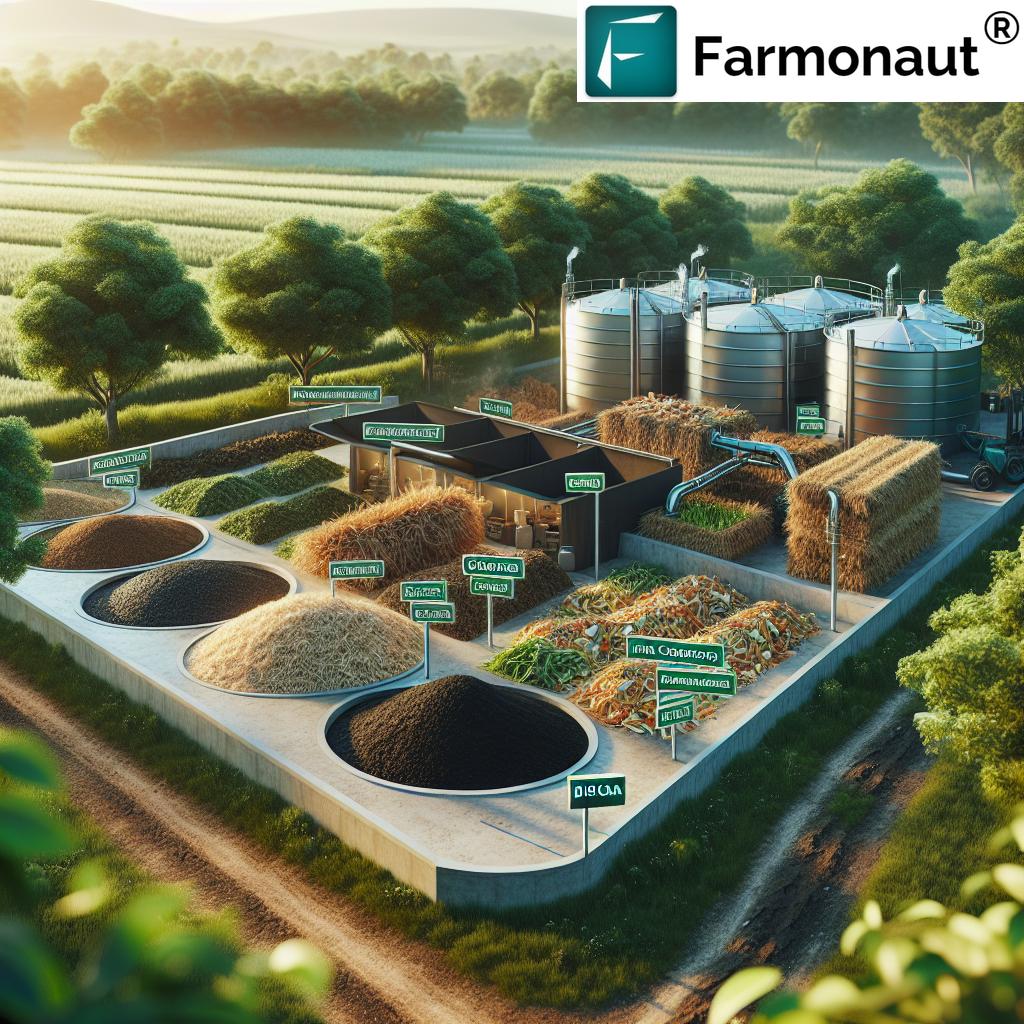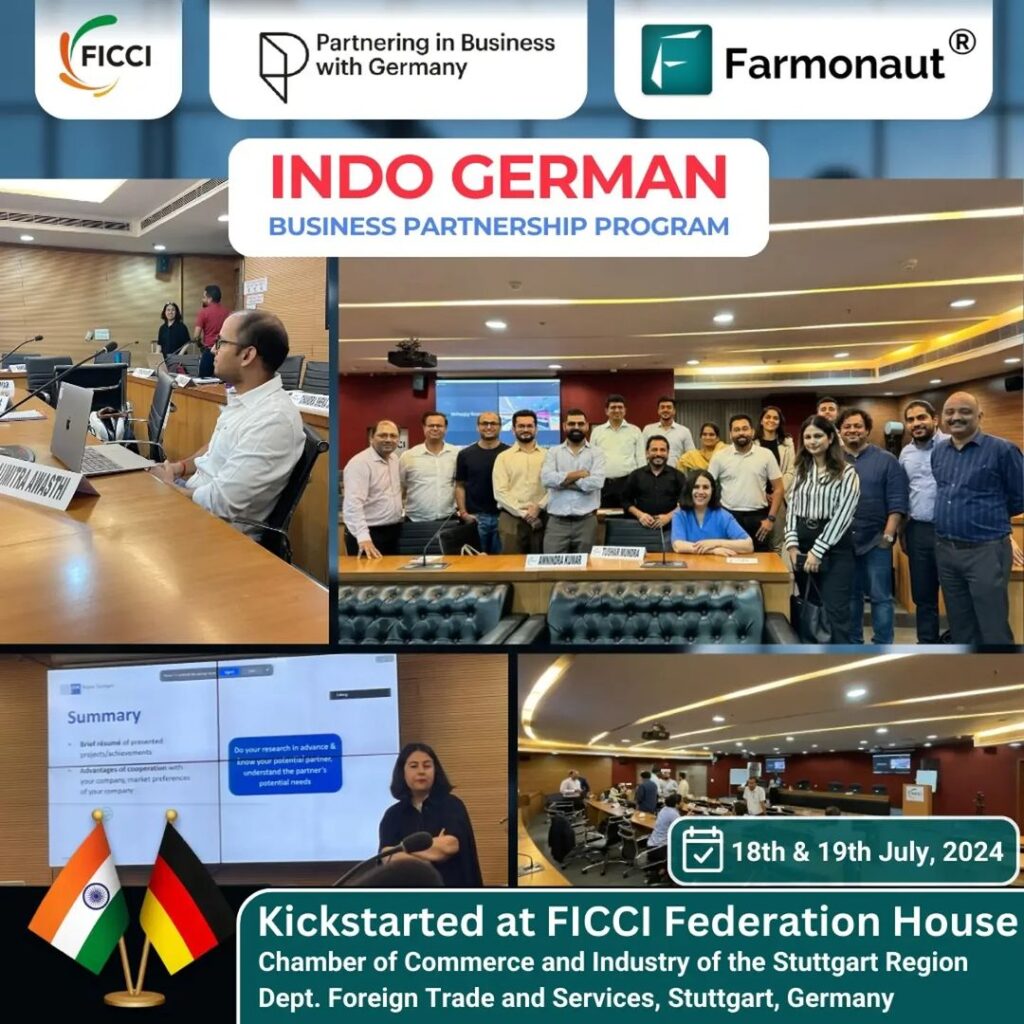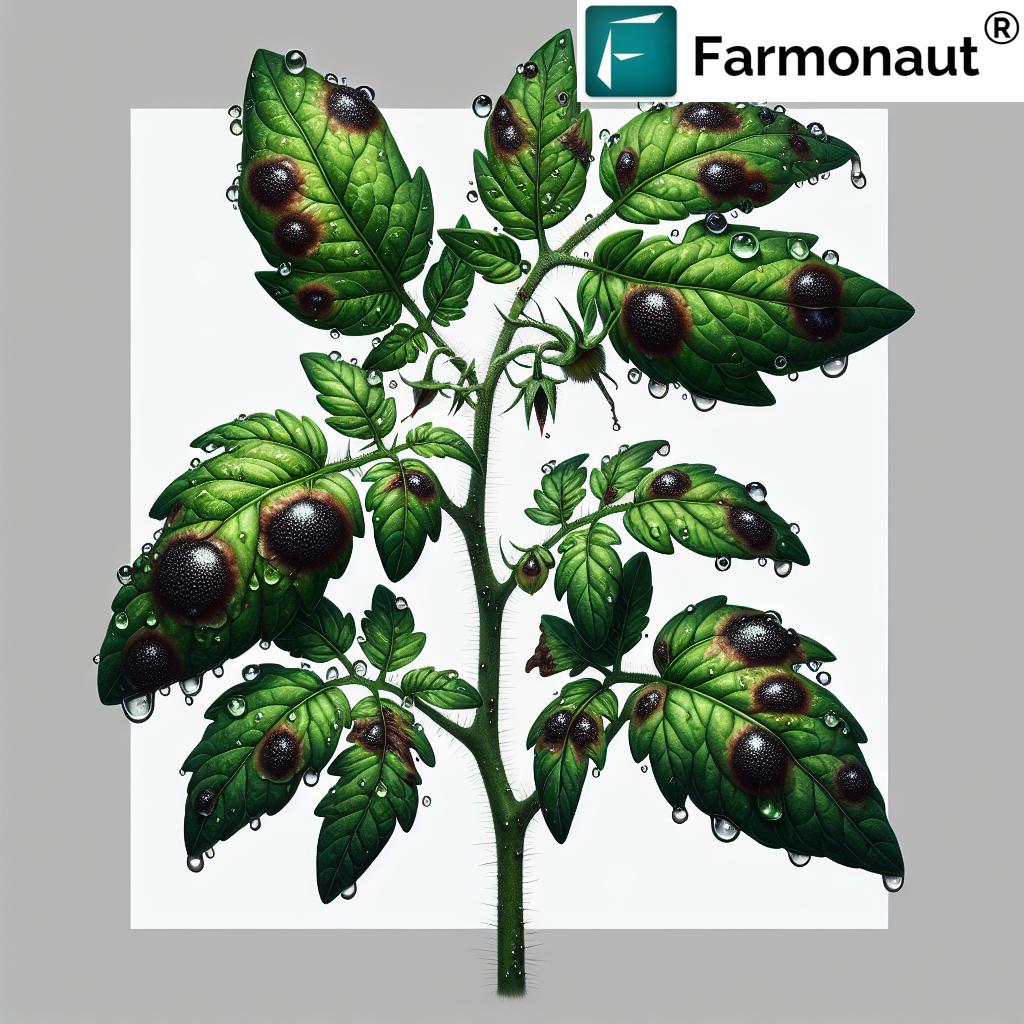7 Shocking Organic Crop Protection Hacks for 2024!
Are you ready to take your sustainable farming practices to the next level in 2024? Organic crop protection is revolutionizing modern agriculture, helping us manage pests, diseases, and weeds—all without relying on synthetic chemicals. It’s a powerful approach that not only safeguards our environment but also actively promotes biodiversity, soil health, and robust crop yields.
Below, we’ll dive into 7 proven, science-backed, and shocking organic crop protection hacks—including practical biological controls, smart cultural practices, and cutting-edge technology like Farmonaut’s satellite-based crop health monitoring. By integrating these sustainable practices, we can nurture a thriving ecosystem that supports healthy, resilient plants today and for the future.
- Why is Organic Crop Protection The Cornerstone of Sustainable Farming?
- The 7 Shocking Organic Crop Protection Hacks for 2024
- Comparison Table of Organic Crop Protection Methods
- Key Benefits of Organic Crop Protection
- Addressing the Challenges of Organic Crop Protection
- Farmonaut: Empowering Organic Crop Protection with Technology
- Integrating Organic Crop Protection into Farming Systems
- FAQ on Organic Crop Protection Methods
- Farmonaut Subscriptions
- Conclusion
Why is Organic Crop Protection The Cornerstone of Sustainable Farming?
Organic crop protection sits at the heart of sustainable agriculture. The essence lies in managing pests, diseases, and weeds in our crops without synthetic chemicals. This eco-friendly approach preserves biodiversity, improves soil health, and ensures the long-term resilience of farming systems.
- Organic crop protection significantly reduces the presence of toxic chemicals in our food and fields, securing healthier ecosystems and safer produce for consumers.
- It emphasizes integrating biological, cultural, physical, and natural pest management methods—creating a balanced, self-sustaining agroecosystem.
- Practical organic pest control methods are as varied as farming itself, ranging from using beneficial predatory insects to adjusting planting timings and rotating crops.
- With less reliance on synthetic pesticides, we see tangible organic farming benefits: improved pollinator activity, soil enrichment, natural cycles of fertility, and increased resilience against changing climate and weather patterns.
The 7 Shocking Organic Crop Protection Hacks for 2024
Ready to boost your farm’s yields and defend your fields against pests and diseases—without compromising environmental integrity? Here are the seven most effective organic crop protection hacks for this year, each rooted in scientific research and validated through sustainable farming worldwide.
1. Unleash Beneficial Predators: Biological Pest Control in Agriculture
One of the most powerful organic crop protection hacks is employing biological controls—leveraging nature’s own pest management agents to reduce harmful populations. This approach involves introducing or supporting predators, parasites, and pathogens that specifically target crop-damaging pests.
- Key Players: Ladybugs for aphid control; parasitic wasps against caterpillar larvae; green lacewings, predatory mites, and nematodes for soil-borne pests.
- Microbial Warfare: Bacillus thuringiensis (Bt) is a beneficial microorganism commonly applied to crops to combat caterpillars and other insects without harming pollinators or humans.
- Benefits: These allies maintain ecological balance, often providing lasting control with minimal disruption to beneficial insects and the wider ecosystem.
Using biological pest control in agriculture will not only reduce the need for chemical pesticides—it can actually build farm resilience against future pest outbreaks by fostering more robust, interconnected wildlife populations.
2. Master Cultural Practices: Disrupt Life Cycles for Sustainable Farming
Cultural control methods directly disrupt pest and disease life cycles by modifying our farming routines. These age-old techniques, when applied systematically, cut off the resources pests rely on to establish populations and minimize potential outbreaks.
- Crop Rotation: Planting different crops in the same field in different seasons interrupts pest reproductive cycles. For example, alternating maize and legumes keeps pests that target a single crop from establishing year after year.
- Companion Planting: Strategic companion pairs—like marigolds with tomatoes—repel nematodes, deter aphids, and attract pollinators and predatory insects.
- Intercropping and Timing: By mixing plant species or adjusting planting/harvest schedules, we reduce favorable conditions for disease and insects to thrive.
- Examples: Planting basil near peppers deters thrips; using radishes as a trap crop for flea beetles keeps them off main crops.
Adopting these cultural techniques is fundamental to organic crop protection—they strengthen the natural resistance of the agro-ecosystem and support overall crop health.
3. Employ Mechanical and Physical Controls: Safe Barriers & Smart Traps
Not all solutions are living! Mechanical and physical controls offer straightforward, chemistry-free strategies to keep pests and diseases at bay. These environmentally friendly crop protection practices make use of tangible interventions:
- Row Covers & Insect Nets: These physical barriers prevent pest insects from reaching plants, ideal for vulnerable seedlings and leafy greens. Row covers are especially useful against aphids, whiteflies, and caterpillars.
- Manual Removal: For small and mid-sized operations, hand-picking pests (like hornworms or beetles) or pruning infested plant parts directly removes threats.
- Diatomaceous Earth: This natural mineral powder is applied to soil or directly onto plants. It’s lethal to crawling insects (beetles, slugs) as it damages their exoskeletons—yet it poses no hazard to crops, humans, or beneficial pollinators.
- Traps and Lures: Sticky cards, pheromone lures, and colored traps attract and capture specific pests, helping to monitor or reduce population surges.
Integrating these controls into your organic pest management plan is especially effective for localized outbreaks, or when crops are at peak susceptibility.
4. Utilize Plant-Derived Organic Pesticides: Smart Alternatives to Synthetics
Although our goal is to minimize inputs, sometimes pests win the persistence game. That’s where organic pesticides and botanical extracts come in—allowing for targeted intervention while keeping your operation sustainable.
- Neem Oil: An age-old solution, neem disrupts insect feeding and reproductive patterns. Effective against caterpillars, aphids, whiteflies, and many fungal diseases.
- Garlic & Chili Sprays: Home-brewed or commercial concoctions act as repellents due to their intense odors, making crops unattractive to many chewing and sucking insects.
- Pyrethrin: Extracted from chrysanthemum flowers, this rapidly biodegrading compound provides broad-spectrum insect knockdown but must be used responsibly to avoid harming beneficials.
- Kelp & Fish Emulsions: These foliar feeds boost plant vigor, improving crops’ natural resistance to attacks.
When applied judiciously, these natural pest management options offer a crucial safety net—especially during high-pressure seasons or for high-value crops.
5. Nourish Your Soil: Improving Soil Health in Organic Farming
A healthy soil is our first and strongest defense against diseases and pests. By focusing on soil health, we make our crops hardier and less attractive to pests. Here’s how sustainable farming practices can supercharge your soil:
- Regular Composting: Enriches the soil with organic matter, microbes, and nutrients, boosting the activity of natural antagonists to plant pathogens.
- Cover Cropping: Growing clover, vetch, or rye between main crops improves soil structure, suppresses weeds, and adds fertility for the next crop cycle.
- Reduced Tillage: Minimizes soil disturbance, allowing earthworms and fungi to thrive—critical partners in plant resilience and disease suppression.
- Thoughtful Mulching: Controls soil temperature, retains moisture, and physically blocks weeds and soil-borne pathogens from reaching plants.
Farmonaut’s Carbon Footprinting solution empowers us to track and reduce the environmental impact of our farming operations, helping us keep our soils (and air) healthy.
6. Practice Integrated Pest Management in Organic Farming (IPM)
No single method works everywhere, every time. Integrated Pest Management (IPM) in organic farming combines all appropriate biological, cultural, mechanical, and least-toxic chemical methods for the most effective crop protection.
- Prevention First: Select pest-resistant crop varieties, and maintain optimal plant nutrition and irrigation.
- Regular Monitoring: Use Farmonaut’s satellite-based crop health monitoring to detect crop stress, nutrient deficiencies, or early pest infestation—so we can intervene at the right time.
- Threshold-Based Action: Only treat pests when populations reach a level that could threaten yields, minimizing unnecessary interventions.
- Traceable Results: For larger-scale producers and food processors, Farmonaut’s blockchain-based traceability ensures every step in crop protection and handling is recorded, transparent, and verifiable.
Embracing integrated systems goes beyond pest control—it adds a vital layer of environmental sustainability and economic efficiency to our organic farm management.
7. Leverage Tech & Data: Satellite Insights and AI Tracking for Organic Farms
The future of organic crop protection is data-driven. With cutting-edge tools like Farmonaut’s satellite and AI-based solutions, we can monitor every field, every season, with unparalleled precision:
- Real-Time Monitoring: Farmonaut’s satellite imagery tracks vegetation health (NDVI), soil moisture, and environmental stress at a glance.
- Jeevn AI Advisory System: Personalized, actionable advice based on current crop health, weather, and local farming conditions. This is a true game-changer for IPM decision-making.
- Resource Optimization: Data-driven insights help us target interventions with pinpoint accuracy—reducing labor, water, and fertilizer use, while boosting yields and sustainability.
- Fleet & Resource Management: Farmonaut’s Fleet Management tool allows agribusinesses to manage machinery and logistics efficiently—lowering the carbon footprint and production costs.
With tools like Farmonaut, organic farmers of every scale—from smallholders to large operations—can bridge the technology gap affordably, gaining access to insights that used to require costly hardware or consultants.
Discover how Farmonaut empowers large-scale farm management and agroforestry & crop plantation advisory—from forest monitoring to plantation scheduling.
Comparison Table of Organic Crop Protection Methods
To help you quickly assess these organic crop protection hacks, here’s a side-by-side comparison including their effectiveness, ease of use, and potential environmental impact.
| Hack Name/Method | Description | Target Pests/Diseases | Estimated Effectiveness (% Reduction) |
Ease of Application | Environmental Impact |
|---|---|---|---|---|---|
| Biological Controls | Introducing/supporting natural predators, parasites, and pathogens (like ladybugs, Bt, wasps) | Aphids, caterpillars, soil-borne insects | 60-80% | Moderate | Low |
| Cultural Practices | Altering crop rotation, companion planting, intercropping to disrupt pest cycles | Soil-borne pests, nematodes, insects, some weeds | 45-70% | Moderate | Low |
| Mechanical/Physical Controls | Row covers, nets, traps, hand removal, diatomaceous earth application | Insects, slugs/snails, localized outbreaks | 35-60% | Easy-Moderate | Low |
| Plant-Derived Organic Pesticides | Neem oil, garlic/chili sprays, pyrethrin, microbial extracts | Aphids, mites, thrips, fungal pathogens | 50-85% | Easy | Low-Medium |
| Soil Health Building | Composting, cover cropping, reduced tillage, mulching | Soil-borne diseases, nutrient loss, weed pressure | 55-75% | Moderate | Low |
| Integrated Pest Management (IPM) | Combining multiple techniques with regular monitoring & thresholds | All major pests, diseases, weeds | 80-95% | Difficult | Low |
| Tech & Data-Driven Monitoring | Satellite, AI, and app-based health/pest/disease stress tracking and resource allocation | Multiple—early detection of stress, pests, nutrient issues | Varies (20-90% based on actionability) | Easy-Moderate | Low |
Key Benefits of Organic Crop Protection
Why invest in these organic crop protection methods? Let’s look at the science-backed advantages for your farm, your business, and the planet:
- Environmental Sustainability: By minimizing the use of synthetic pesticides and fertilizers, we reduce pollution of waterways, soil, and air, protecting non-target species and overall ecosystem health.
- Enhanced Biodiversity: Cultural and biological control methods foster a diverse community of beneficial organisms—predators, pollinators, soil microbes—building natural pest suppressive capacity.
- Improved Soil Health: Soil health-building practices increase soil organic matter, structure, water retention, and micronutrient content—leading to healthier, faster-growing crops.
- Higher Quality, Safer Food: With drastically lower or zero residues of toxic chemicals, organic crops are not only safer for consumers, but also nutritionally robust.
- Long-Term Resilience: Sustainable systems are less dependent on external inputs, meaning better economic returns over time, particularly as pests and diseases evolve resistance to synthetic solutions.
Tip: By utilizing Farmonaut’s crop loan and insurance verification tools, you can improve your access to credit and protect investments—certified by transparent, real-time satellite data.
Addressing the Challenges of Organic Crop Protection
While organic crop protection brings many advantages, there are some challenges of organic farming that we must recognize and plan for:
- Lower Yields: On average, organic systems yield 19-25% less than conventional ones, due to limited synthetic input and broader pest challenges. However, yield gaps can shrink with experience and integrated practices.
- Higher Labor & Production Costs: More labor is required for tasks such as mechanical weeding, frequent rotation, and careful pest monitoring. However, long-term savings and premium crop prices often offset these expenses.
- Limited Immediate Pest Control: Fewer chemical “quick fixes” can make emergencies harder to address. Investing in multiple, layered strategies is key.
- Certification Complexity: Becoming certified organic demands record-keeping, compliance, and regular inspections—but it provides trusted market access and price premiums.
Pro Tip: Use Farmonaut’s data-driven systems for easy integration via API—enabling effortless tracking and reporting for compliance, certification, and sustainability audits. See detailed API developer documentation.
Farmonaut: Empowering Organic Crop Protection with Technology
Farmonaut is pioneering affordable, high-precision satellite-based farm management solutions for farmers everywhere. By blending satellite imagery, AI, blockchain, and cloud platforms, we offer tools to:
- Monitor crop health and stress in real time
- Identify emerging pest, disease, or nutrient issues early
- Generate AI-based, crop-specific advice to increase yields, cut losses, and boost sustainability
- Enable traceable, transparent supply chains for your crops
- Support large and small-scale operators with fleet, resource, and risk management tools
Our mission is to democratize access to precision agriculture tools—no expensive hardware required—so every farmer can make data-driven decisions for integrated, environmentally sound organic crop protection.
Integrating Organic Crop Protection into Farming Systems
So how do you actually bring these ideas to life? Whether you’re running a small plot or a major agribusiness, integrating organic crop protection involves:
- Diversify Crops and Habitats: Growing a mix of crops and establishing flowering boundaries attracts beneficial insects, maintains pollinator populations, and breaks up pest monocultures.
- Adopt Integrated Pest Management: Combine biological, cultural, mechanical, and low-toxicity organics—prioritizing prevention, early monitoring, and action thresholds.
- Invest in Farmer Education: Stay informed through local extension services, workshops, and agritech platforms (like Farmonaut) to keep your knowledge and practices up to date.
- Track, Document, and Adjust: Use mobile apps and satellite data to document every intervention—improving outcomes and providing proof for certification and insurance.
- Commit to Continuous Research: The field of organic pest control is rapidly evolving—follow the latest publications, field trials, and technological innovations for even better results.
Remember: Organic crop protection isn’t about any one method—it’s about integrating the best ideas for your particular farming system, location, and scale.
FAQ on Organic Crop Protection Methods
- What is organic crop protection?
- Organic crop protection refers to managing pests, diseases, and weeds without synthetic chemicals, relying instead on natural, biological, cultural, mechanical, and low-toxicity pest management strategies. It aims to maintain crop yields, improve soil health, and safeguard the surrounding environment.
- Do organic methods provide effective pest control?
- Yes, organic crop protection methods can be highly effective, especially when combined in integrated pest management systems. While they may require more planning and labor, they often deliver durable and sustainable results, reducing long-term pest outbreaks.
- What tools or technologies are available to help with organic pest management?
- Modern tools include satellite-based crop health monitoring (like Farmonaut’s platform), AI advisory systems, blockchain traceability, mechanical barriers (row covers, nets), microbial pesticides (Bt), and data-driven resource optimization.
- Is organic certification necessary for using these techniques?
- While you can use organic crop protection methods without being certified, certification grants access to valuable organic markets and often attracts premium prices. Certification requires compliance, extensive documentation, and regular audits.
- How can I get started with Farmonaut’s solutions?
- Visit our web app or download the Android/iOS app to try satellite-based monitoring and data-driven farm advisory. For advanced users, explore our API and check the developer docs.
- Do organic crop protection methods cost more?
- Initial labor and transition costs may be higher, but organic farming often benefits from reduced chemical/fertilizer purchases, premium crop prices, and improved soil health. Over time, investing in sustainability balances out costs and benefits.
Farmonaut Subscriptions
Ready to supercharge your precision agriculture journey?
For seamless, affordable access to satellite-based crop health, resource management, carbon footprint tracking, and traceability solutions, join thousands of farmers and agribusinesses on Farmonaut today.
Conclusion
Organic crop protection is far more than the avoidance of chemicals: it’s an entire ecosystem approach to sustainable agriculture. By implementing effective biological, cultural, mechanical, and data-driven methods, we defend our fields, nurture living soils, and create farming systems that are resilient, profitable, and kind to the environment.
The future of farming belongs to those who combine traditional knowledge with modern technology. With the right tools—like Farmonaut’s satellite-based insights and AI-driven systems—any farmer, anywhere, can implement world-class, evidence-based, and scalable organic crop protection.
Let’s farm for abundance and for tomorrow. Integrate these 7 shocking organic crop protection hacks into your sustainable farming practices, and grow stronger, healthier, and more profitable crops in 2024—and beyond.








